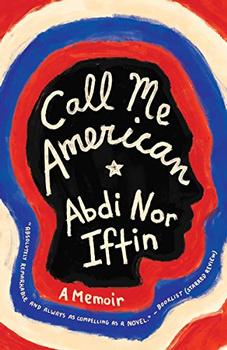Summary | Excerpt | Reading Guide | Reviews | Beyond the book | Read-Alikes | Genres & Themes | Author Bio

Creating Currents of Electricity and Hope
by William KamkwambaThe Boy Who Harnessed the Wind is the immensely engaging and inspiring true account of an enterprising African teenager who constructed a windmill from scraps to create electricity for his entire community.
William Kamkwamba was born in Malawi, a country where magic ruled and modern science was mystery. It was also a land withered by drought and hunger, and a place where hope and opportunity were hard to find. But William had read about windmills in a book called Using Energy, and he dreamed of building one that would bring electricity and water to his village and change his life and the lives of those around him. His neighbors may have mocked him and called him misala—crazy—but William was determined to show them what a little grit and ingenuity could do.
Enchanted by the workings of electricity as a boy, William had a goal to study science in Malawi's top boarding schools. But in 2002, his country was stricken with a famine that left his family's farm devastated and his parents destitute. Unable to pay the eighty-dollar-a-year tuition for his education, William was forced to drop out and help his family forage for food as thousands across the country starved and died.
Yet William refused to let go of his dreams. With nothing more than a fistful of cornmeal in his stomach, a small pile of once-forgotten science textbooks, and an armory of curiosity and determination, he embarked on a daring plan to bring his family a set of luxuries that only two percent of Malawians could afford and what the West considers a necessity—electricity and running water. Using scrap metal, tractor parts, and bicycle halves, William forged a crude yet operable windmill, an unlikely contraption and small miracle that eventually powered four lights, complete with homemade switches and a circuit breaker made from nails and wire. A second machine turned a water pump that could battle the drought and famine that loomed with every season.
Soon, news of William's magetsi a mphepo—his "electric wind"—spread beyond the borders of his home, and the boy who was once called crazy became an inspiration to those around the world.
Here is the remarkable story about human inventiveness and its power to overcome crippling adversity. The Boy Who Harnessed the Wind will inspire anyone who doubts the power of one individual's ability to change his community and better the lives of those around him.
William Kamkwamba's story is important, sad and beautiful. Despite the degradation of his and his people's suffering, his story reminds us - especially those of us in the West whose intellectual and physical appetites have been deadened by plenty - that being human is a constant striving for the possible and the wonderful...continued
Full Review
 (621 words)
(621 words)
(Reviewed by Jo Perry).
Moving Windmills Project
Inspired by William Kamkwamba's story, the Moving Windmills Project was founded in 2008 to support rural economic development and education projects in Malawi. The nonprofit group works with local leaders to provide food, clothing, shelter, sanitation, health, education and community-building.
Completed projects include:

If you liked The Boy Who Harnessed the Wind, try these:

by Abdi Nor Iftin
Published 2019
The incredible true story of a boy living in war-torn Somalia who escapes to America--first by way of the movies; years later, through a miraculous green card.

For the Benefit of Those Who See
by Rosemary Mahoney
Published 2015
Rosemary Mahoney tells the story of Braille Without Borders, the first school for the blind in Tibet, and of Sabriye Tenberken, the remarkable blind woman who founded the school.
The worth of a book is to be measured by what you can carry away from it.
Click Here to find out who said this, as well as discovering other famous literary quotes!